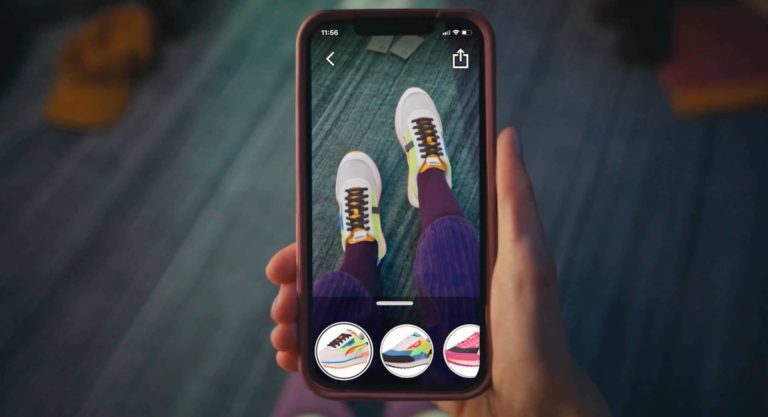
Though AR continues to be challenged in gaining mainstream consumer traction, there are some bright spots as it gradually builds. Specifically, revenue continues to gain momentum in mobile AR categories like marketing & advertising, commerce, and enterprise productivity.
To quantify those markets today and projected forward, one of ARtillery’s Intelligence’s latest revenue forecasts does a deep dive on mobile AR. That includes several subsectors and moving parts such as consumer spending, enterprise spending, enablement software, and AR marketing.
To synthesize and summarize the report’s findings, the latest episode of ARtillery Briefs breaks things down, which you can see below in embedded video and narrative takeaways.
Baseline for Growth
So what did the report uncover? At a high level, global mobile AR revenue is estimated to grow from $12.45 billion in 2021 to $36.26 billion in 2026. The baseline for this growth is the installed base of 3.6 billion global smartphones — an increasing share of which are AR-enabled.
That total is fragmented into different platforms such as Meta Spark, Snap’s Lens Studio, Apple’s ARkit, Google’s ARCore, and Web AR. These platforms each have varying installed bases, the greatest of which today is Web AR, with about 3.1 billion compatible units.
Breaking down those installed bases further, Meta Spark is estimated to have 2.86 billion AR-compatible smartphones, followed by ARkit (1.37 billion), TikTok (1.05 billion), ARCore (1.15 billion), and Snap (575 million). Visual search (e.g., Google Lens) operates on 2.8 billion devices.
But beyond installed bases, the figure that matters more is the de-duplicated sum of AR users, which ARtillery pegs at 1.05 billion globally by the end of 2022. That’s projected to grow to about 1.67 billion by year-end 2026, with varying market shares across the above platforms.
Picks & Shovels
Zeroing in on revenue, consumer mobile AR spending is projected to grow from $1.89 billion in 2021 to almost $5.82 billion by 2026. This includes AR experiences that consumers pay for, which are dominated today by in-app purchases, mostly in Pokémon Go.
Beyond digital goods, spending on AR-influenced physical goods was estimated to exceed $26 billion in 2021. This is the transaction value of goods bought using “try before you buy” AR visualization. But this total doesn’t count as AR revenue, as AR itself isn’t being purchased.
ARtillery instead attributes AR’s proportionate role in the value chain by tracking spending on AR commerce-enablement software to make it all happen. This includes everything from 3D asset creation to processing and compression technologies to eCommerce integrations.
These “picks & shovels” will be critical components of consumer AR shopping and brand marketing. For example, tools like Google Cloud could serve as important AR accelerants, as will experience creation engines like 8th Wall and infrastructure technology such as Mawari.
Time to Market
To put things further into perspective, the commerce-enablement piece examined above falls under the broader category of enterprise mobile AR. In total, this category of mobile AR spending is projected to grow from $10.6 billion in 2021 to $30.5 billion in 2026.
This enterprise AR category naturally includes the area it’s most commonly known for: boosting industrial and corporate productivity. This involves line-of-sight visualization through mobile devices for operational functions like assembly, maintenance, and field IT support.
Enterprise AR also includes entertainment & games development. This is software that enables companies to build AR for their customers (B2B2C). This will be opportune as AR software providers meet demand for democratized AR creation, and accelerated time to market.
Lastly, enterprise spending includes marketing and advertising, such as the dollars spent by brand advertisers to distribute AR experiences through paid campaigns. This is popular today with sponsored lenses but will branch into other high-value formats such as visual search.
Growing Piece of the Pie
That all just scratches the surface and you can see more in the full report. But in closing – and sticking with the theme of visual search – it has several of the necessary ingredients to be an AR killer app in being a high-frequency utility that’s broadly applicable… just like web search.
Also like web search, it’s naturally monetizable due to users’ intent signaling with every search they do. And there’s ample revenue headroom as visual search is currently under-monetized while Google Lens Snap Scan and others experiment with UX design and monetization.
But it’s well on its way as Google Lens sees 10 billion visual searches per month. So expect visual search – along with social lenses and other formats that organically develop – to be a growing piece of the mobile AR revenue pie. But will take time for all of that to materialize.






